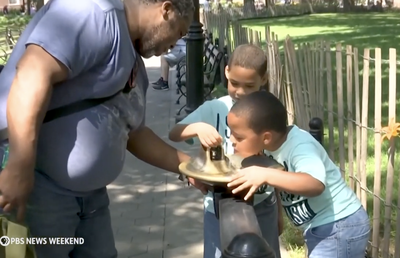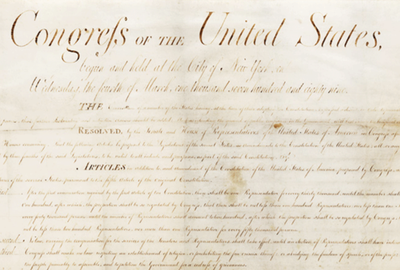For a Google doc version of this lesson, click here. You will be prompted to make a copy.
Overview
An investigation led by the Marshall Project and the New York Times revealed a culture of abuse within New York state prisons — including hundreds of incidents of mistreatment and a lack of accountability for guards.
In this lesson, students will read and discuss the investigation, including discussing ways to prevent future abuse.
This lesson is part of NewsHour Classroom's ongoing Searching for Justice series. Find more Searching for Justice content here.
Objectives
Students will understand the culture of abuse inside New York State prisons and analyze the implications of such incidents.
Subjects
Social Studies, Civics
Estimated time
50-minutes
Materials
- Computers or tablets with internet access
- Projector or Smartboard
Procedure
Note: Due to the sensitive nature of the topic, it’s crucial to create a safe and respectful environment for discussion. Remind students of the importance of empathy, active listening and constructive dialogue throughout the lessons.
Warm-up activity (5 minutes)
- Begin the lesson by asking students if they have heard about the investigation revealing a culture of abuse inside New York state prisons.
- Engage students in a brief discussion, asking what they already know or what they think this investigation might involve.
Main activity
Introduction to the news story (10 minutes): Watch the video with the students: “Investigation reveals culture of abuse inside New York state prisons” (transcript here).
- Allow students to watch the video again and read the transcript independently or in small groups.
- As they watch the news story, encourage them to highlight key information or take notes on important details.
Small group discussion (15 minutes)
- Divide the class into small groups of 3-4 students.
- In their groups, ask students to discuss the following questions:
- What were the main findings of the investigation?
- How does the culture of abuse affect the inmates?
- What are the potential implications of these abuses for society as a whole?
Encourage students to provide evidence from the article to support their answers.
Whole-class discussion (15 minutes)
- Bring the students back together as a whole class and facilitate a discussion based on the questions from the small group discussion.
- Encourage students to share their perspectives, ask follow-up questions and engage in respectful debate.
- Summarize the main points of the discussion and highlight the significance of the issue of prison abuse.
Optional
Factors contributing to prison abuse (15 minutes)
- Divide the class into small groups and assign each group one factor that contributes to the culture of abuse in New York State prisons (e.g. lack of oversight, power dynamics, inadequate training).
- Instruct each group to brainstorm and discuss the ways in which their assigned factor contributes to abuse.
- Provide each group with a whiteboard or flipchart and markers to record their ideas.
Group presentations (15 minutes):
- Ask each group to present their findings to the class, explaining the factor they focused on and the specific ways it contributes to prison abuse.
- Encourage the rest of the class to take notes on each presentation.
Identifying strategies for addressing prison abuse (10 minutes)
- Lead a class discussion on potential strategies for addressing prison abuse based on the factors identified in the previous activity.
- Guide the discussion by asking questions such as:
- How can we improve oversight within the prison system?
- What can be done to shift power dynamics and prevent abuses?
- How can training programs be enhanced to promote empathy and respect?
3. Record the students’ suggestions on the whiteboard or flip chart.
Extension activities
Action plan (5 minutes)
- Ask students to individually brainstorm one action they can take to address the issue of prison abuse, either on a personal level or as a collective effort.
- Give students a few minutes to write down their action plan.
- If time allows, invite a few students to share their plans with the class.
Reflection and Closure (5 minutes)
- Ask students to write a brief reflection on what they have learned during the lesson and how their understanding of the issue of prison abuse has evolved.
- Have a few students share their reflections with the class, if time allows. Or, hold a brief whole-class discussion to allow students to share their reflections and insights.
- Conclude the lesson by emphasizing the importance of understanding and addressing issues related to prison abuse. Discuss the importance of taking action to address the issue of prison abuse.
Standards
C3 Standards
D2.His.3.6-8. Use questions generated about individuals and groups to analyze why they, and the developments they shaped, are seen as historically significant.
D2.His.3.9-12. Use questions generated about individuals and groups to assess how the significance of their actions changes over time and is shaped by the historical context.
Common Core
CCSS.ELA-LITERACY.RH.11-12.9: Integrate information from diverse sources, both primary and secondary, into a coherent understanding of an idea or event, noting discrepancies among sources.
CCSS.ELA-LITERACY.RH.11-12.1: Cite specific textual evidence to support analysis of primary and secondary sources, connecting insights gained from specific details to an understanding of the text as a whole.
About the lesson author

Brittany Copeland has been an educator for 15 years and proudly serves as a special education teacher for Center City Public Charter Schools, Shaw Campus, in Washington, D.C. Brittany strives to create a classroom where differences are celebrated, and success is defined by growth, not just grades. Through patience, creativity, and an understanding of diverse learning needs, Brittney nurtures the unique potential in every student.
Fill out this form to share your thoughts on Classroom’s resources.






